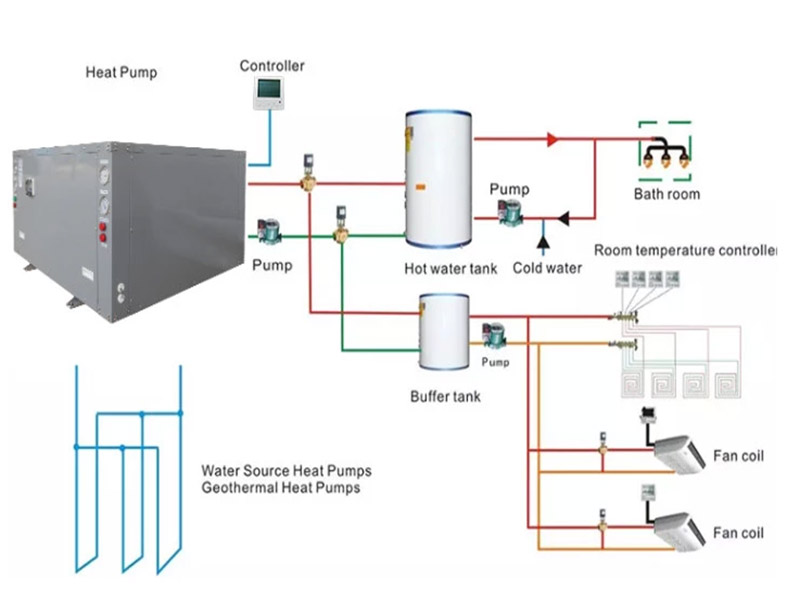
Just 2 metres below the surface the temperature of the ground is a fairly constant 11-12°C. We can capture this warmth and use it as a reliable, renewable heat source to run central heating systems for our homes.
The soil, clay and stones found 2m underground may not feel warm to the touch, but there is enough heat in there – absorbed in the first place from the sun – for ground source heat pumps to utilise and to release into homes and other buildings. This is done by means of a buried network of fluid-filled pipes connected to a compressor and pump unit.
How does it work?
The most distinctive feature is the pipework, ususally about 100m of it, which is buried in loops in trenches (photo, below) or in one or more vertical boreholes. Once the pipework is buried the surface of the ground can return to being a field, garden, drive etc, and you wouldn’t know it was there.
A liquid – typically water with antifreeze – is pumped through the pipework and absorbs the warmth of the ground. A compressor in the main unit of the heat pump raises the temperature of this fluid, and a heat exchanger transfers the warmth to a separate body of water which circulates round the central heating system. The now-cooled water is pumped back out to the buried pipework and the cycle begins again.
The whole system is powered by electricity, so unless this comes from a renewable source such as a wind turbine, a ground source heat pump still generates carbon emissions, though less than those associated with conventional types of heating, and with no on-site emissions.
Remark:
If you‘re interesting in heat pump products,please feel free to contact OSB heat pump.
Some of the articles are taken from the Internet. If there is any infringement, please contact us to delete it.

